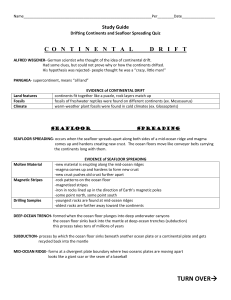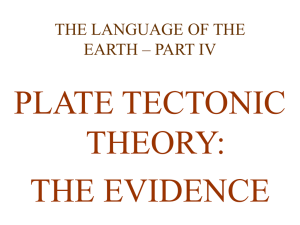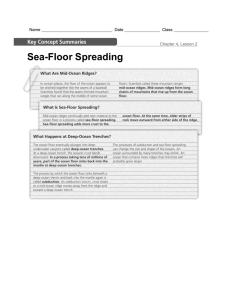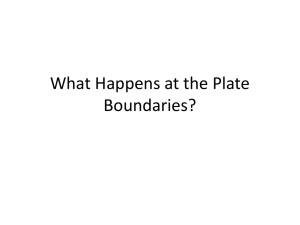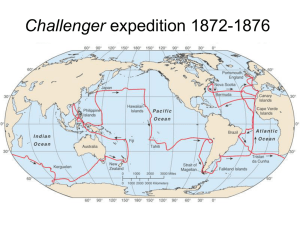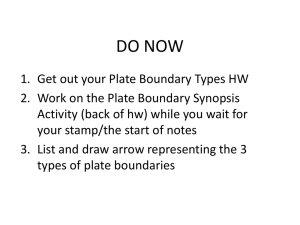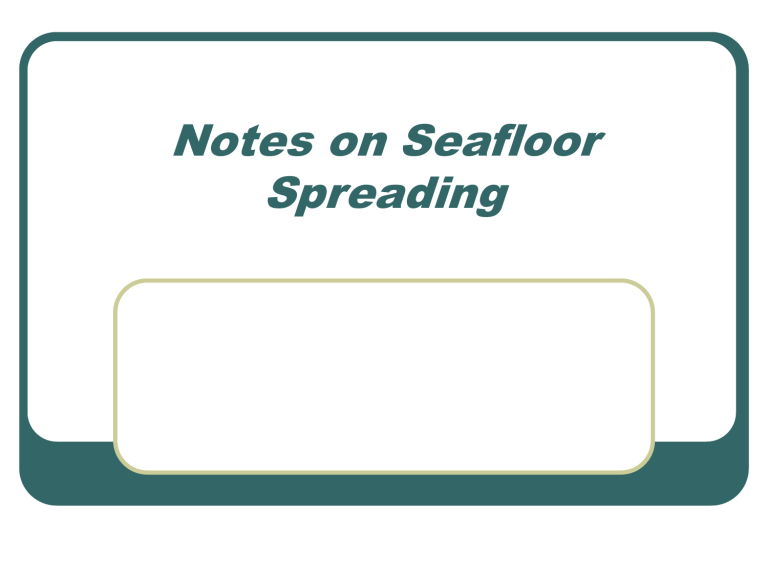
Notes on Seafloor Spreading 1. What were the opinions of most scientists about the topography… the mid-1900’s, most scientists thought that the ocean floor was essentially flat. Until 2. Which technology allowed scientists to map the ocean floor? Echo-sounding technology, such as SONAR, uses sound waves to measure water depth. The sound waves bounce off the ocean floor and back to a receiver. 3. Which 2 features of the ocean floor were discovered… Vast underwater mountain chains called mid-ocean ridges were discovered in places such as the Atlantic Ocean. Deep-sea trenches that are thousands of kilometers long and up to 11 km. deep were found in the Pacific Ocean. Analysis Of Seafloor Rocks 1. The ages of seafloor rocks vary. Those rocks near mid-ocean ridges are younger than those near deep-sea trenches. -Ocean floor rock is only about 180 million years old. -Where is the ocean crust from earlier oceans? Analysis Of Seafloor Rocks 2. The thickness of ocean floor sediment is only a few hundred meters. -Why aren’t seafloor sediments as thick as continental sediments? -Could the thin blanket of ocean sediment be the result of the age of the ocean crust? 5. Describe Hess’ theory of seafloor spreading New ocean crust is formed at mid-ocean ridges, and older ocean crust is destroyed at deep-sea trenches. Magma is forced up at ocean ridges and hardens to form new crust. As spreading along a ridge continues, it forces old crust into the trench, where it turns back into magma due to heat and pressure. 6. How is seafloor spreading the “missing link” in plate tectonics? Seafloor spreading explains how the continents move. They are riding atop the oceanic crust as the seafloor spreads apart at mid-ocean ridges.

